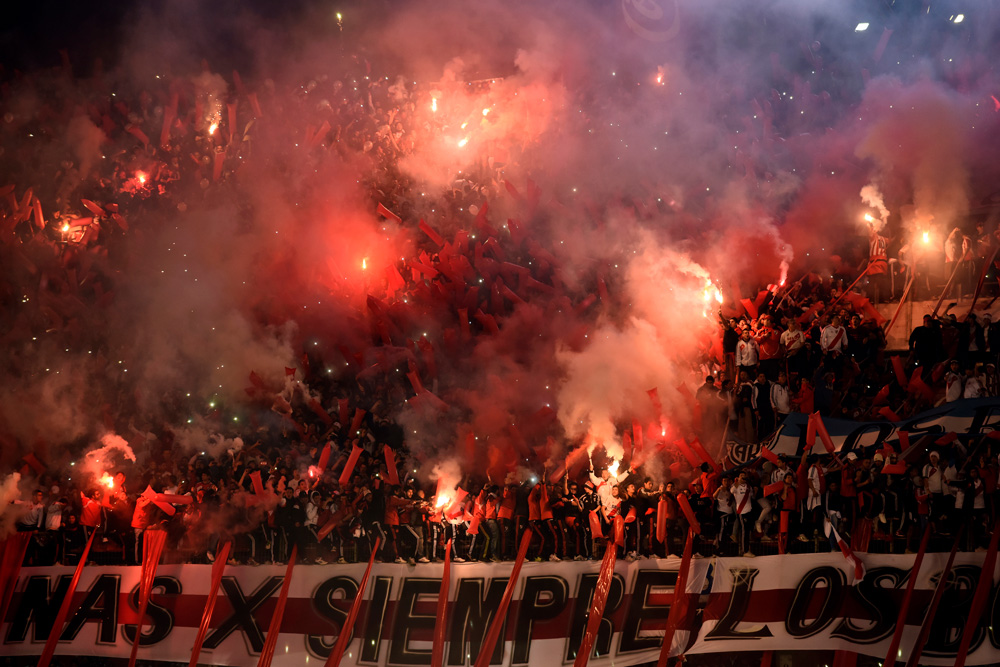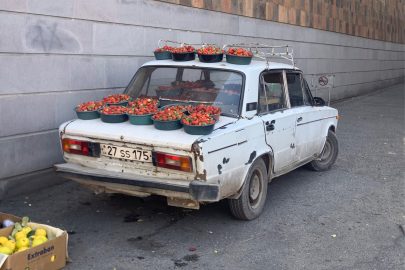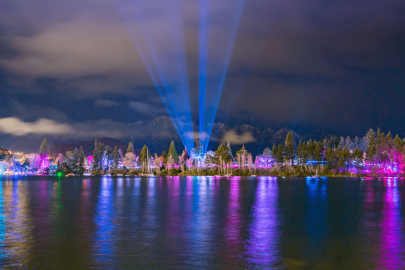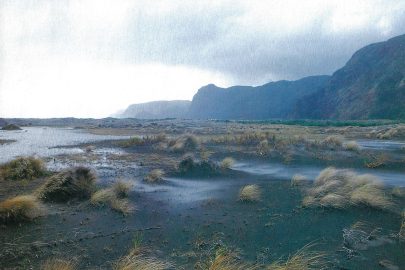Nov 24, 2015 Travel
The early barons of Buenos Aires went to Europe and brought home with them all the trappings of the old world they could buy. And then the people added Latin American exuberance.
This article was first published in the October 2015 issue of Metro. Photos: Getty.
It was the moment when I realised our driver was asleep. We’re on the biggest multi-lane road in the world: 16 of them, mostly channelling cars and buses that are trying to change lanes — for which the preferred method is to drift across. Approaching each set of lights, the taxis merge like a braided river. Buenos Aires on a sunny Sunday: it’s not chaotic, but it’s busy.
And the driver is asleep. He’s 60 or so, round and grizzled, and perhaps he’s had a good lunch, and perhaps I shouldn’t worry because he’s not actually driving while he sleeps. We stop, and down goes the head, slumped on to chest. The lights change, there’s a pause, and he rouses himself, breathing in with a noise that’s part sigh and part broken groan, and off we go. We stop again, down goes the head again. It happens maybe six or eight times as we travel down the Avenida 9 de Julio and I sit there anxiously, too cowardly to complain. Even when he’s got his eyes open he’s barely awake. But we survived.
I like watching traffic in a strange city. You learn the rules, and you fancy it tells you something about the place. In Buenos Aires no one runs a red light or even an amber one. If they use the horn, it’s with a reluctant little toot. So polite.
But they all do that lane drifting, and pedestrian crossings, which are wide and invariably busy, do not allow pedestrians right of way. They merely signify parts of the road where drivers know to be careful as they push their way through the crowd.
Actually, who knows what that means?
We went to the football the way tourists do, which is definitely the way to go if you are a tourist: in a minivan, in an organised group. We stopped in very pretty parkland and joined thousands of other people walking away from this late-afternoon sylvan idyll towards a gigantic dilapidated concrete bunker.
The method of getting everyone in is genius. You hold your ticket up high, so they can see it easily at the checkpoints as you approach. There were 11 checkpoints, each one a row of security guards across the street, and we barely slowed as we reached them. There was never a queue. Never. A. Queue. At one point — the checkpoint where they might give you a body search if they were so inclined — we were separated, the men from the women.
Inside, a wall of people in red, with waves of singing passing through us, fireworks, a lot of smoke.
Everyone was in red and black, the colours of River Plate. Lots of young men, of course, but also lots of older men, buddied up for the evening, and women and children, too. Family groups. It was dusk and it was so exciting. We poured into the place, 60,000 of us, for a Sunday-night game that was merely one of three the team were playing at home over a 10-day period.
Inside, all around, a wall of people in red, with waves of singing passing through us, fireworks, a lot of smoke. A young man in front of me had a baby with him: just him and the child. Alcohol is banned; so are supporters of the other team. It’s the perfect recipe for excitement without violence, though the highly visible presence of armed riot police probably helps with that, too. Up the top of the stadium, in a large, dark, open area behind the seats, men pissed against the walls, and you could smell the pot.
The great thing about the game was its volatility: it flowed end to end and it wasn’t at all obvious who was going to win. The disappointing thing was, we were watching the not-quite-best players, because in Argentina, if you’re really good, you get a contract in Europe.
It was so thrilling. And then it was a nil-all draw. Football, eh?
A hundred years ago, Argentina was the seventh-wealthiest country in the world. Refrigeration made it so, opening up Europe for their beef exports as it did for our mutton. But the wealth that established the beef barons didn’t come from the pampas grass. Their ancestors, a few hundred years earlier, made their money in silver and gold.
And not in the normal way. Argentina is Latin for “silvery”, and Río de la Plata, the river that divides Buenos Aires from Montevideo in next door Uruguay, is Spanish for “river of silver”. But that’s misleading. The silver was in the mountains, and the mountains (the ones with mines) were mainly in Peru, not Argentina.
Peruvian mineowners had no easy route to Europe; they had to ship their goods through the Antarctic storms of Cape Horn. So early Argentinian entrepreneurs spotted a market opportunity: they opened their own supply lines to the eastern coast, trading with, overwhelming and stealing from the mineowners, and sent their bounty sailing across the easy Atlantic.
In the late 19th century European immigration, especially from Spain and Italy, grew on a vast scale, and yet the riches from beef (and wheat) were so great, Argentina still had a per capita income 70 per cent higher than Italy’s and 90 per cent higher than Spain’s.
How those land barons loved their Europe. They visited all the time; their families lived there for part of the year. They had so much money and so much love for the old world, they hired Parisian architects (the same ones who rebuilt Paris for Napoleon III under the command of Baron Haussmann) to come and do the same for Buenos Aires.
There are more Parisian boulevards and apartment blocks and mansions in Buenos Aires than there are in Paris, I swear.
Which they did, only more so. There are more Parisian boulevards and apartment blocks and mansions in this city than there are in Paris, I swear.
They bought everything they wanted, and even things they didn’t much seem to want. In the National Museum of Decorative Arts, Rodin’s Thinker (one of many castings) sits pensively tucked away in a stairwell.
This museum is a fantastic place to visit. It’s a mansion filled with art of the pre-Enlightenment: El Greco, Cranach, portraits of the children of Russian royalty, beauties from the courts of the Habsburg Empire… There’s no actual connection to Argentina, but that didn’t stop the nobles buying up the works anyway. Back in the new country, they had other people’s forebears hanging by the mantel.
The museum is built around an enormous ballroom, with a magnificent parquet floor and a beautiful ceiling carved from wood and inlaid with lozenges of green leadlight glass. Immense Renaissance tapestries and murals hang on the walls, and it’s surrounded, right up high, by a balustraded mezzanine on which, it is so easy to imagine, the nobles spied on each other’s trysts, duelled with rapier and pistol, all of that.
The dream of civilisation is palpable. Teatro Colón looks like an unexciting lump of stonework, viewed from Avenida 9 de Julio, but it’s an opera house of sublime repute within. Bookshops are everywhere, and busy. Education is free, genuinely free all the way from pre-school to university, which is not a Peronist initiative but has been in place since 1884. “In Buenos Aires, the one who doesn’t study is the one who doesn’t want to,” they supposedly like to say.
There are bistros and bars all over the city, with the same commodified hipster coolness you’ll find in Sydney or Auckland or, presumably, on the Left Bank.
The dream of civilisation is palpable because it is also precarious. The first military coup came in 1930, others followed, and after the Great Depression, nobody rebuilt the economy. After the war came the Peróns and their feverishly demagogic democracy, and then more coups and more populist responses, and still nobody rebuilt the economy.
By the mid-1970s, the military was securely back in the presidential palace, which is called the Casa Rosada, because it’s pink, although not because they’re all boys in there together. Back in the day they put bulls’ blood in the whitewash.
In the 1970s the colour symbolised a more horrifying kind of blood. Tens of thousands of people “disappeared” in the Dirty War, and it continued until after the Falklands War in 1982, when the military was forced from power. And still nobody rebuilt the economy.
It’s weird being in a place where you know that every single person over a certain age — that ebullient restaurant manager, the shy ticket seller at the museum, the cab driver falling asleep at the wheel — was either complicit in the terror or a victim of it, or knew at any moment that they might be required to become one or the other. They’re friendly. There’s so much they’re not going to tell you.
One of the best cultural things I saw was at Malba, the Latin American Art Museum of Buenos Aires, where the entire gallery was presenting works about military repression. In one, called Revolving Door, performers stood in a room, joining together in the manner of protesters, with linked arms, and then in another pose, and then another, all the while looking at you. What would you do? Where do you stand? Their silent gaze asked but somehow did not threaten, and it was very hard to walk away.
The whole city is full of public art, which comes in many varieties. Soldiers on plinths, often on horseback, wave their swords at you all over the city. There are grand works of modern art, some abstract and some pointedly democratic. Graffiti creeps up the walls, and so do murals, some fabulous and some breathtakingly kitschy. Concrete men sit on benches at the bus stops.
The concrete men are a revelation: they’re life-sized, fully coloured mannequins of popular radio comedians from the 70s and 80s — the voices of the people during the Dirty War, the only ones who could criticise and not get thrown out of a helicopter over the sea. People sit with them and take their selfies. They seem so tacky, but they are loved.
It’s a lot of fun, this city. La Recoleta is a cemetery chock full of mausoleums: the rich old families, and quite a number of new ones, are fiercely competitive not just to the end but well beyond. You can see how they goad each other on with their ostentation. You’ve got a bigger cupola? We’ll build a fancier set of steps! Eva Perón is in there too, presumably causing any number of bodies to spin in their graves.
You want steak? You’re in the right place here, though be warned: the portions are huge and you need to choose your restaurant with care, so stick to the recommended places. Poor-quality meat is more widespread than you’d expect. Malbec is what you drink with it, or on its own, or with anything else. A very fine wine indeed, even at the budget end of the scale.
You eat late and the people like to show off. They stand tall and proud and feel good about themselves.
You like caramel? You’re also in the right place: they smother dulce de leche over everything, given half the chance. It’s not their most endearing trait.
The old port, Puerto Madero, is closed now to ships but open to tourists, restaurants, Google and Facebook office blocks and some very smart hotels. The place is an object lesson in how not to renovate a waterfront — it’s too open, too uniform, too anonymous — but it does have a beautiful cable-stay bridge designed by Santiago Calatrava, and the long boardwalk by the water’s edge is as welcoming as boardwalks everywhere always are.
The famous football suburb of La Boca looks like Cuba, the trees all scrawny in the dust and the masonry crumbling. Because of floods, the public buildings are built on concrete plinths, right up to the edge of the street. Dogs roam, sprawl, slumber. There were shipyards once, but they are long gone.
They make a virtue of dilapidation in the little tourist precinct of Caminito, where a bunch of truly ramshackle buildings have been painted brightly but seem deliberately unrestored in any other way, and you can pay tango dancers, doing their best not to look bored, to pose with you, dance for you, dance with you. It’s cute.
You eat late and the people like to show off. They stand tall and proud and feel good about themselves. There’s music all around, tango and opera and dubstep and everything in between. I saw a busker with her band doing Amy Winehouse and it was really good.
And there’s such exuberance. A protest march over wages left the streets strewn with a million leaflets. The cars drift but they don’t crash; the cocky football crowds crow but they don’t fight. The buildings and the boulevards — Haussmann’s genius was infectious, let’s not deny it — are quite lovely.
Getting to Argentina
Air New Zealand will operate direct services to Buenos Aires three times weekly from December 1, 2015. For more information and to book, visit airnewzealand.co.nz






